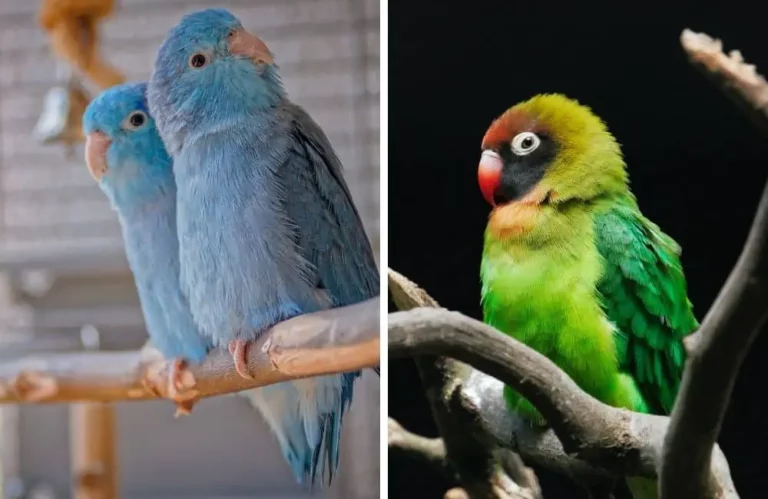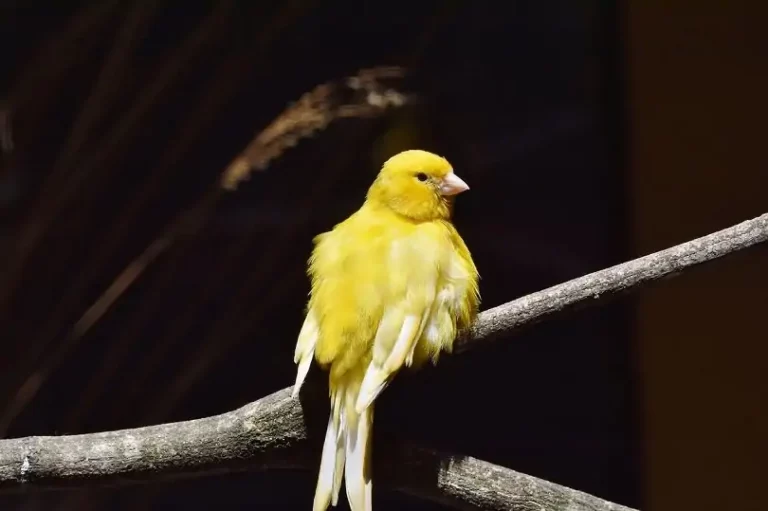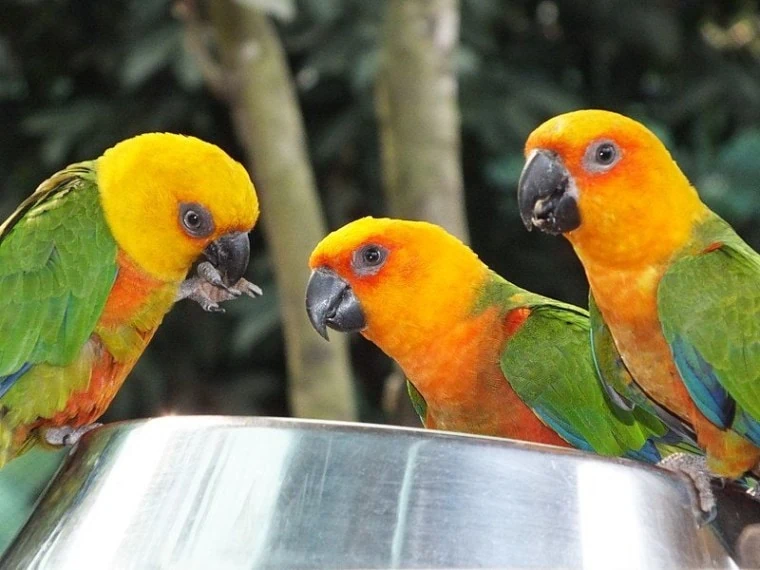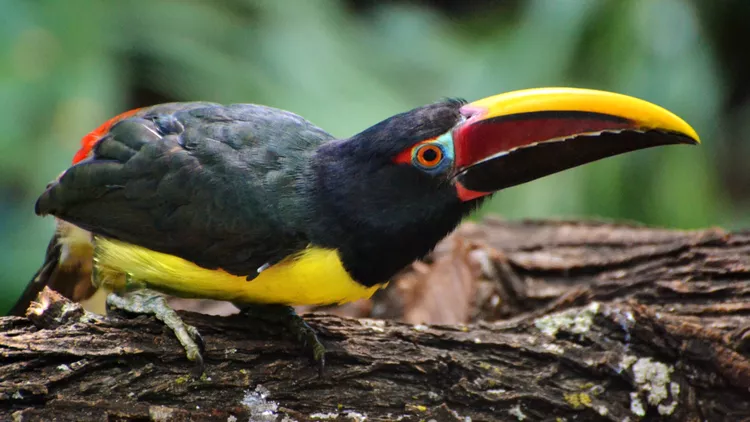How to Teach Your Pet Bird to Step Up and Perch on Your Hand
Teaching your pet bird to step up and perch on your hand is an essential skill that can greatly improve your relationship with your feathered friend. Training your bird not only helps build trust between the two of you but also enhances their mental and physical well-being.
In this comprehensive guide, we will discuss the importance of training pet birds, the benefits of teaching your bird to step up and perch on your hand, and provide detailed steps to help you achieve this goal successfully.
Importance of training pet birds
Pet birds are intelligent creatures that thrive on social interaction and mental stimulation. Training your bird is crucial for developing a strong bond and providing them with the enrichment they need.
Moreover, a well-trained bird is more manageable and less prone to developing unwanted behaviors, such as excessive screeching, biting, or aggression.
Benefits of teaching your bird to step up and perch on your hand
Teaching your bird to step up and perch on your hand offers several advantages:
- Improved trust and bonding: Successfully training your bird to step up and perch on your hand strengthens the bond between you and your pet, fostering trust and mutual understanding.
- Easier handling: A bird that’s comfortable stepping up onto your hand is much easier to handle during routine tasks, such as cleaning their cage, grooming, or providing medical care.
- Increased confidence and independence: As your bird masters the step-up technique, they will become more confident and independent, which can improve their overall well-being and happiness.
- Foundation for advanced training: Mastering the step-up skill is a steppingstone for teaching your bird more advanced tricks and commands, further enhancing their mental stimulation and enriching their lives.
In the following sections, we will delve into the step-by-step process of teaching your pet bird to step up and perch on your hand, ensuring a successful and enjoyable experience for both you and your feathered friend.
Preparing for the Training
Before beginning the training process, it’s essential to prepare both your environment and yourself to create the best conditions for success. In this section, we’ll discuss how to choose the right environment and the importance of patience and understanding your bird’s body language.
Choosing the right environment
- Quiet and calm space: Select a quiet, calm area in your home for training, where your bird feels comfortable and secure. Loud noises or sudden movements can be stressful for your pet and may hinder the training process. Minimize disturbances by turning off any background noise, such as TVs or radios, and keeping other pets away from the training area.
- Minimizing distractions: Remove any distractions that may divert your bird’s attention during training, such as toys or food dishes. By limiting distractions, you can ensure that your bird remains focused on the training process and the bond you’re building.
Preparing yourself
- Patience and positive reinforcement: Training your bird requires patience and consistent positive reinforcement. Remember that each bird is unique, and the learning process may take time. Keep your training sessions short and enjoyable, and always reward your bird with praise or treats when they perform the desired behavior. This will help build trust and create a positive association with the training process.
- Familiarizing yourself with your bird’s body language: Understanding your bird’s body language is key to successful training. Birds communicate through various cues, such as fluffing their feathers, chirping, or moving away. Observing and interpreting these signs will help you gauge your bird’s comfort level, allowing you to adjust your approach as needed. Be prepared to respect your bird’s boundaries and adapt your training methods to their individual needs.
By creating an ideal training environment and preparing yourself with patience and a good understanding of your bird’s body language, you’ll set the stage for a successful and enjoyable training experience. In the following sections, we’ll discuss how to build trust with your bird and guide you through the step-up training process.
Building Trust with Your Bird
A strong foundation of trust is crucial for successful training. Before you begin teaching your bird to step up and perch on your hand, it’s important to establish a bond and create a sense of security for your pet. In this section, we’ll cover how to create a bond with your bird and the importance of respecting their boundaries.
Creating a bond
- Spending quality time together: Spend time with your bird every day, even if it’s just sitting near their cage while you read, work, or watch TV. Your presence will help your bird become accustomed to you and strengthen your bond. Talk to your bird in a gentle, soothing tone, and maintain a calm demeanor to create a positive atmosphere.
- Hand-feeding treats: Offering your bird treats by hand is an excellent way to build trust and establish a positive association with your presence. Choose healthy treats your bird loves, such as fruits, vegetables, or bird-safe seeds. Gradually work on moving the treats closer to your fingers, encouraging your bird to approach your hand.
Respecting your bird’s boundaries
- Avoiding forceful interactions: Never force your bird to interact with you, as this can damage the trust you’re trying to build. Instead, allow your bird to approach you at their own pace. If your bird appears uncomfortable or moves away from you, give them space and try again later.
- Observing signs of discomfort or fear: Pay attention to your bird’s body language and recognize signs of fear or discomfort, such as fluffed feathers, raised crest, or attempts to flee. If your bird shows any of these signs, take a step back and give them time to relax. It’s essential to respect your bird’s feelings and adapt your approach accordingly.
By building trust and establishing a bond with your bird, you create a solid foundation for successful training. Once your bird is comfortable with your presence and displays trust in you, you can begin the step-up training process, as outlined in the following sections.
The Step-Up Training Process
Once you’ve established trust with your bird and created a conducive training environment, it’s time to begin the step-up training process. In this section, we’ll guide you through introducing your hand, encouraging the step-up, and addressing any challenges that may arise during training.
1. Introducing your hand
- Approaching your bird slowly: Approach your bird in a calm and gentle manner, moving slowly to avoid startling them. Hold your hand near your bird, allowing them to observe and become accustomed to your hand’s presence.
- Offering your finger or a handheld perch: Present your index finger or a handheld perch horizontally to your bird, positioning it just above their feet and slightly touching their lower chest. This encourages your bird to step up onto your finger or the perch by gently nudging their chest and providing a stable surface for them to grasp.
2. Encouraging the step-up
- Using verbal cues and rewards: As you offer your finger or the perch, use a clear verbal cue, such as “step up” or “up,” to signal to your bird what you want them to do. When your bird steps up onto your finger or the perch, immediately reward them with praise or a treat. This positive reinforcement will help your bird associate stepping up with a pleasurable outcome, making them more likely to repeat the behavior in the future.
- Repeating the process consistently: Consistency is key to successful training. Practice the step-up training several times a day, keeping sessions short and enjoyable. As your bird becomes more comfortable with the step-up, gradually increase the duration of each session, always reinforcing their success with praise and treats.
3. Addressing challenges
- Overcoming fear or reluctance: If your bird is fearful or reluctant to step up, be patient and continue to build trust with them. Offer treats and gentle encouragement, and give your bird time to adjust to the idea of stepping up onto your hand or the perch. Remember that each bird is unique, and the training process may take longer for some individuals.
- Correcting improper perching techniques: Some birds may attempt to grasp your finger with only one foot or perch using their beak. If this occurs, gently encourage them to use both feet to grip your finger or the perch properly. Consistently reinforcing the correct perching technique will help your bird understand the desired behavior.
By following these steps and consistently practicing the step-up training process, your bird will gradually become more comfortable and adept at perching on your hand. In the next sections, we’ll discuss how to advance your bird’s training and ensure long-term success.
Advancing Your Bird’s Training
Once your bird has mastered the step-up technique, you can build upon this foundation by teaching them additional skills, such as stepping down and introducing new perching locations. In this section, we’ll guide you through teaching your bird to step down and encourage them to explore new perching spots with confidence.
1. Teaching your bird to step down
- Using similar techniques as step-up training: To teach your bird to step down, follow a similar process to the step-up training. Offer your finger or a handheld perch at a slightly lower level than your bird’s current position, touching their lower chest gently to encourage them to step down.
- Ensuring a comfortable landing spot: Make sure that the surface you want your bird to step down onto is stable and secure. This can be a perch inside their cage, a tabletop, or any other safe surface. Providing a comfortable landing spot will help your bird feel more confident when stepping down.
2. Introducing new perching locations
- Slowly expanding your bird’s comfort zone: Gradually introduce your bird to different perching locations within your home. Start by moving them from their cage to a nearby perch or play stand, allowing them to explore and become familiar with the new location. Over time, expand the range of perching spots to help your bird gain confidence and develop a sense of independence.
- Encouraging exploration and confidence: Reward your bird with praise and treats when they successfully perch on a new location or explore a new environment. This positive reinforcement will encourage them to continue exploring and build their confidence in unfamiliar situations.
By teaching your bird to step down and introducing them to new perching locations, you can further enhance their skills and create a more stimulating, engaging environment for them. In the final section, we’ll discuss how to ensure long-term success in your bird’s training and maintain the bond you’ve developed.
Ensuring Long-term Success and Maintaining Your Bond
Training your pet bird to step up and perch on your hand is an ongoing process that requires consistency, patience, and positive reinforcement. In this section, we’ll discuss how to maintain your bird’s skills and continue strengthening the bond between you and your feathered friend.
Consistent practice and reinforcement
- Regular training sessions: Continue to practice step-up and step-down training regularly, even after your bird has mastered these skills. This will help maintain your bird’s proficiency and reinforce the positive behaviors you’ve taught them.
- Adapting to your bird’s needs: Be prepared to adjust your training approach as your bird grows and their needs change. This might include modifying the rewards you offer, adapting the training environment, or introducing new challenges to keep your bird engaged and mentally stimulated.
Fostering a strong, lasting bond
- Providing a stimulating and enriching environment: Offer your bird a variety of toys, perches, and opportunities for exercise and exploration to keep them happy, engaged, and mentally stimulated. A well-rounded and enjoyable living environment is essential for maintaining a strong bond with your bird.
- Ongoing social interaction and communication: Continue to spend quality time with your bird every day, talking to them, engaging in play, or simply being present in their space. Regular social interaction is crucial for maintaining a strong bond and ensuring your bird’s overall well-being.
By consistently practicing and reinforcing your bird’s training, adapting to their needs, and providing a stimulating, engaging environment, you can ensure long-term success in your bird’s training and continue to strengthen the bond between you and your pet.
With patience, persistence, and understanding, you and your feathered friend can enjoy a happy, fulfilling relationship for years to come.
Frequently Asked Questions
How long does it take to teach a bird to step up and perch on my hand?
The time it takes to teach a bird to step up varies depending on the individual bird, the bond you have with them, and the consistency of your training. Some birds may learn quickly, within a few days or weeks, while others may take months.
My bird seems afraid of my hand. How can I help them overcome this fear?
To help your bird overcome their fear of your hand, spend more time building trust and bonding with your bird. Hand-feed them treats, move slowly and calmly around them, and avoid forcing interactions. With time and patience, your bird should become more comfortable with your hand.
Can I teach an older bird to step up and perch on my hand, or is it only possible with young birds?
It’s possible to teach birds of any age to step up and perch on your hand. However, it may take more time and patience to train older birds, as they may have developed habits or fears that need to be addressed.
My bird tends to bite when I try to get them to step up. What should I do?
Biting can be a sign of fear, discomfort, or territorial behavior. To address this, work on building trust with your bird, understanding their body language, and providing positive reinforcement for non-aggressive behavior.
Final Thoughts
Teaching your pet bird to step up and perch on your hand is a rewarding and essential skill that fosters trust, improves handling, and enhances your bird’s overall well-being. By following the comprehensive guide provided in this blog post, you can successfully train your bird while building a strong and lasting bond.
Remember to approach training with patience and consistency, providing a calm and quiet environment, and using positive reinforcement techniques to encourage your bird’s progress. Additionally, understanding your bird’s body language and respecting their boundaries is crucial to ensure a positive and enjoyable training experience for both you and your pet.
With dedication and persistence, you and your feathered friend can master the step-up skill and use it as a foundation for future training and bonding experiences. Enjoy the journey, and celebrate the successes you and your bird achieve together along the way.
Additional resources:
- How to Train a Bird to Step on Your Finger: 11 Steps (wikihow.com)
- (23) (How To) teach your pet bird to step up on your finger!!!! – YouTube
- How to Get a Parakeet to Perch on Your Hand | Pets on Mom.com
- Basic Bird Training: Teaching Your Bird to Step Up | PetCoach
- How to train a parrot to step up – Exotic Direct






